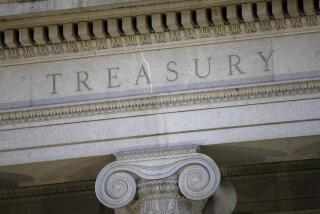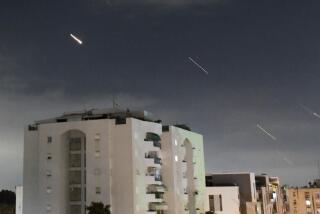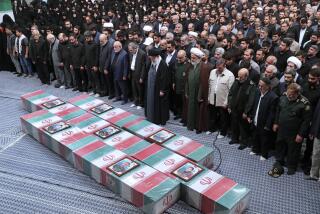U.N. agency alleges suspicious activities in Iran nuclear program
Years of credible evidence indicates Iran may be secretly working to develop a nuclear weapon, the United Nations nuclear watchdog agency said Tuesday in a strongly worded report that renewed debate among Western powers over how to curb the Islamic Republic’s nuclear ambitions.
The report by the Vienna-based International Atomic Energy Agency cites a series of suspect activities that raises “serious concerns” about “possible military dimensions to Iran’s nuclear program.”
Iran’s leaders ordered a halt to an extensive nuclear program in 2003, the report says, but clandestine work on high-speed detonators and other weapons-related research “may still be ongoing.” The report was based on more than 1,000 pages of documents, satellite photos and other intelligence supplied by 10 member nations.
It does not assert that Iran has resumed a full-scale push to build a nuclear warhead for the Shahab-3 ballistic missile, which the IAEA says appeared to be Tehran’s goal until 2003.
But public disclosure of the evidence may boost U.S. and European efforts to toughen U.N. sanctions despite resistance from China, Russia and several other nations. It also may prompt calls in the U.S. and Israel for harsher measures, including sabotage, covert action and military strikes.
Obama administration officials said the report echoes their assessment of Iran’s capabilities. They said the White House remains committed to pushing diplomacy over military action.
“It is incumbent upon Iran to answer the very serious questions raised by this report,” a senior administration official, speaking on condition of anonymity, told reporters in a telephone briefing. If not, “we will be looking to impose additional pressure on the Iranian government,” including new sanctions.
Another senior administration official speaking at the same briefing emphasized that the report “certainly doesn’t assert that Iran has mastered all the necessary technologies, and we agree with that assessment.”
The official added that Iran’s weapons activity since 2003 “appears to be relatively uncoordinated and sporadic. I would think the advancement hasn’t been that dramatic.”
Sen. Mark Kirk (R-Ill), a leading proponent of confronting Iran, described the advances as more alarming.
“The United Nations, not known for speaking clearly on many topics, is now telling us one clear thing: that the Islamic Republic of Iran is designing and moving towards building nuclear weapons,” he said. “This is something that we can’t allow to happen.”
Kirk called for sanctions against Iran’s powerful central bank. The Obama administration has declined to do so, contending that it would disrupt international oil markets and further damage the reeling U.S. and European economies.
David Albright, a former U.N. nuclear inspector who heads the nonprofit Institute for Science and International Security in Washington, said the evidence suggests Iran would need only six months to enrich uranium to sufficient purity to fuel a nuclear device if it decided to build a bomb. The IAEA report does not provide a time line.
Iran insists its nuclear program is entirely for civilian purposes, and has said that the documents IAEA cites are forgeries.
“There is no serious proof that Iran is going to create a nuclear warhead,” Foreign Minister Ali Akbar Salehi said Tuesday during a visit to Armenia, according to the Agence France-Presse news agency. “We have repeatedly stated that we are not going to create nuclear weapons.”
Iranian state-run TV broadcast the release of the report and promptly condemned the findings as “ridiculous” and concocted by Western intelligence services.
The report, by IAEA Director General Yukiya Amano, a former Japanese diplomat, is a quarterly update on Iran’s compliance with U.N. Security Council resolutions regarding its nuclear program. It has a 15-page annex that details “possible military dimensions to Iran’s nuclear program.”
They include efforts, some successful, to procure nuclear-related and dual-use equipment from abroad, as well as efforts to secretly produce nuclear material to avoid detection by IAEA inspections, the annex says. Iran also has worked to develop an indigenous design of a nuclear weapon, including the testing of components, the report says.
Because Iran does not fully cooperate with the IAEA, “the agency is unable to provide credible assurance about the absence of undeclared nuclear material and activities in Iran, and therefore to conclude that all nuclear material in Iran is in peaceful activities,” the report says.
Times staff writer Patrick J. McDonnell in Beirut and special correspondents Julia Damianova in Washington and Ramin Mostaghim in Tehran contributed to this report.
More to Read
Start your day right
Sign up for Essential California for news, features and recommendations from the L.A. Times and beyond in your inbox six days a week.
You may occasionally receive promotional content from the Los Angeles Times.







